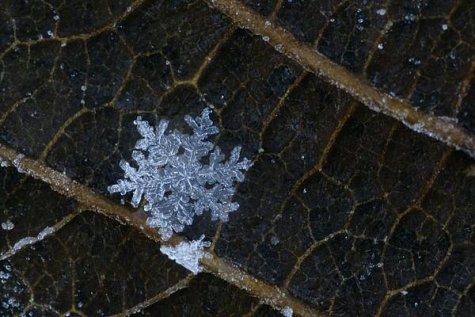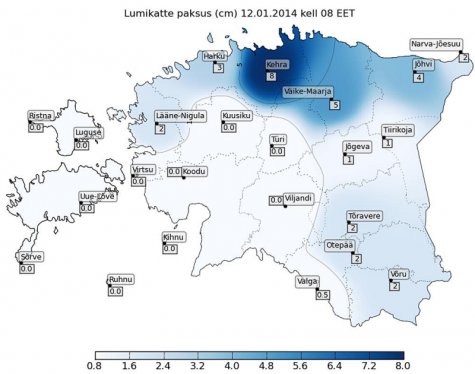The tiny miracle of a snowflake
Photo: Arne Ader
Translation: Liis
Snowflake on horse chestnut leaf
Who of us have not caught snowflakes on our mittens, and even tasted them as a child?
The prerequisite for snowfall is of course minus degrees, and in clouds there is such a temperature. In the centre of a snowflake is a condensation nucleus, a tiny dust grain, on to which water molecules attach. Frozen water is at its most stable in a hexagonal shape: for the creation of this shape little energy is used. All snowflakes grow in the clouds following the same scheme.
Snowflakes are like small plates when they form at a few degrees of cold. Already when the temperature falls to five degrees of cold, ice needles or little crystal pillars form. In very cold weather, when there is more than 15 degrees of cold, we see ultra thin platelets that cover the ground with a very fluffy snow carpet.
Even today scientists are not able to explain why a temperature change of a few degrees produces snow crystals with quite different shapes.
Snowflakes consist of translucent crystals, but why then is snow white? Light is reflected back from the crystal surfaces of the snow carpet; only a small part of the light is absorbed, and thus snow looks white to us. In case of blue skies the snow cover seems bluish, but in a beautiful sunset the snow field takes on an orange hue.
The colours depend on the light.
EMHI snow cover map from the morning of January 12th:










